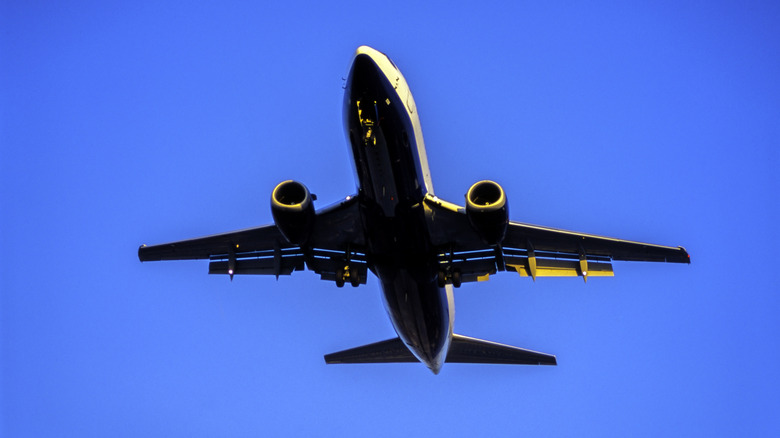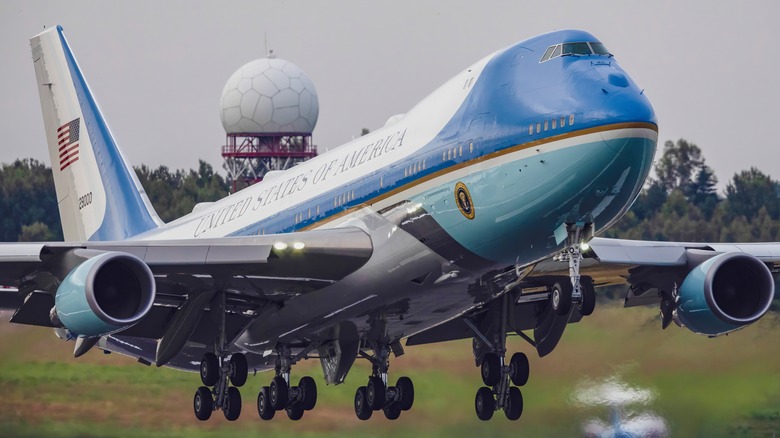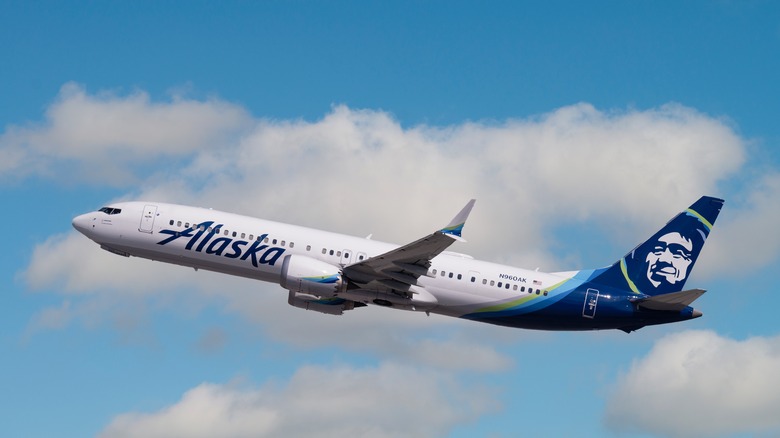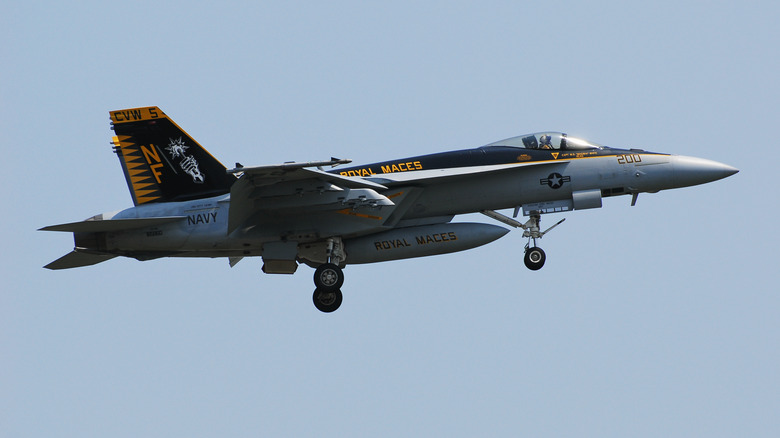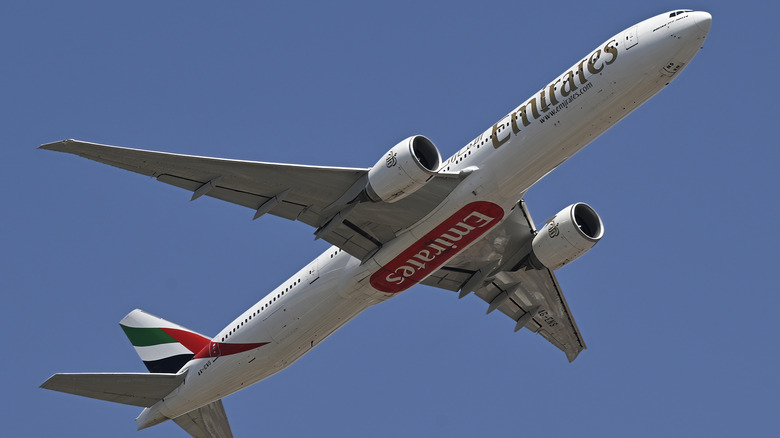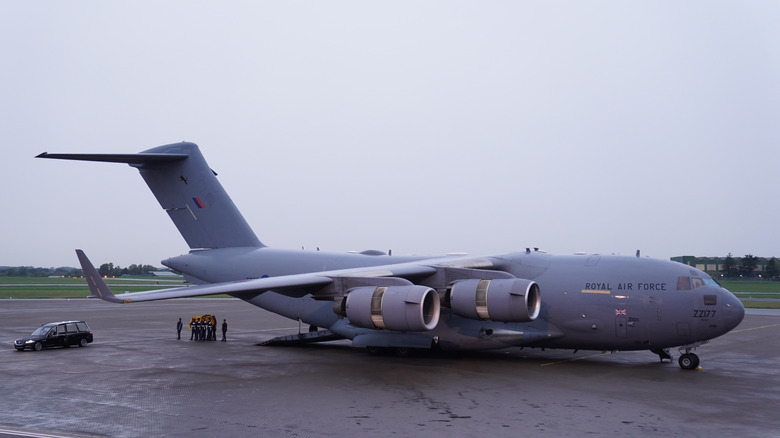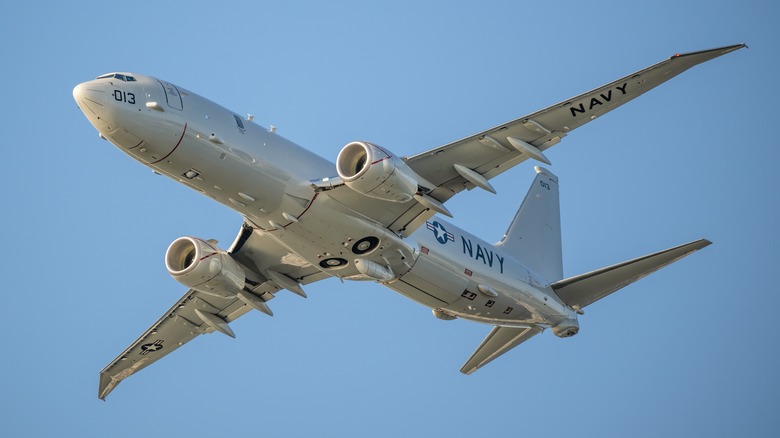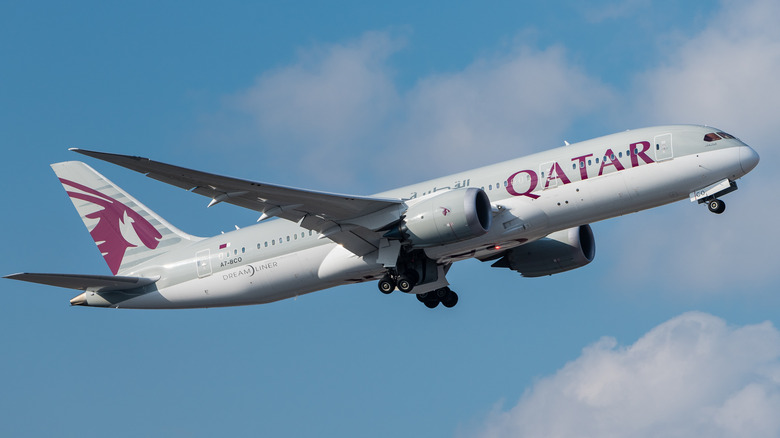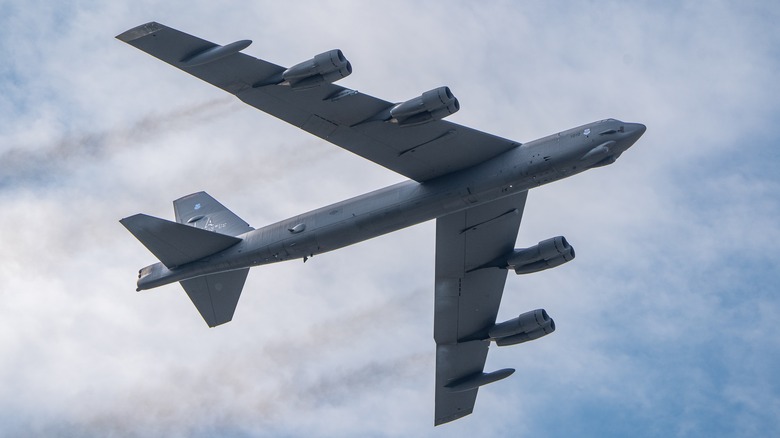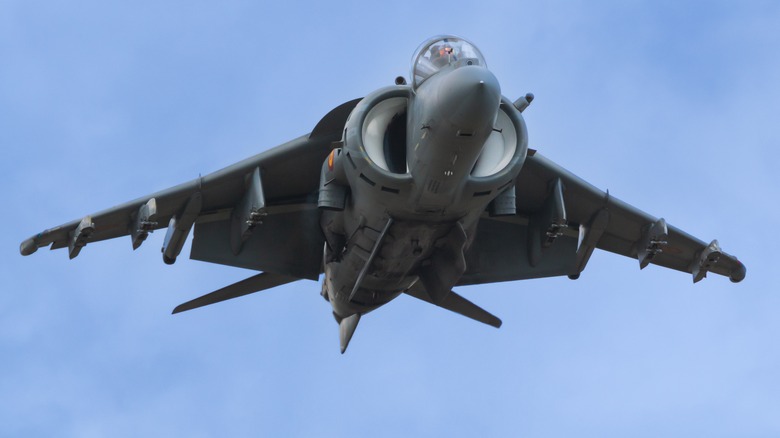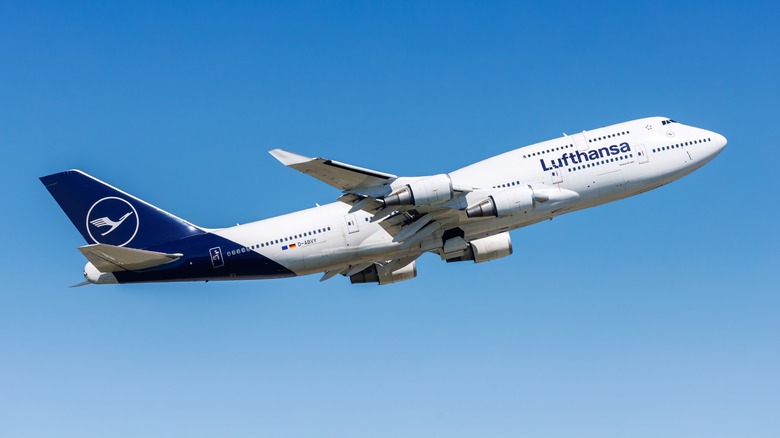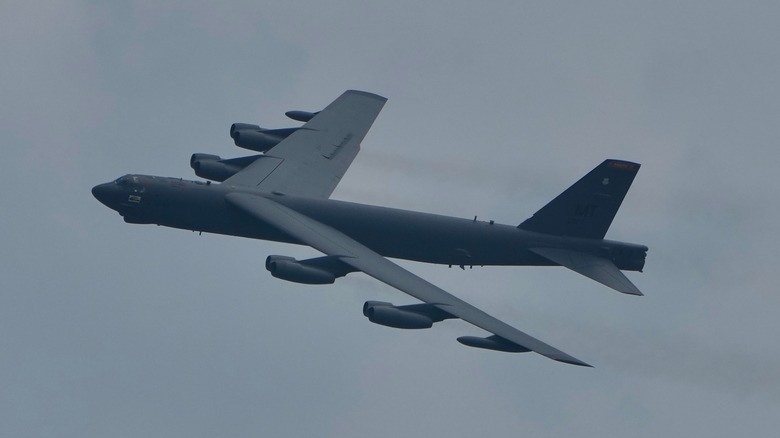10 Of The Best Jets Boeing Has Ever Made
The Boeing name is familiar to anyone with even a passing knowledge of aircraft. Set up as Pacific Aero Products in 1916, the company took on the name of its founder William E. Boeing the following year and has kept the moniker for more than a century. Like Lockheed Martin, Boeing took advantage of the advancements in air travel in the early 1900s after the Wright Brothers rang in the era of the airplane in aviation.
Over the last 100 years, Boeing has grown to dominate the passenger jet market alongside Airbus, and also competes with the likes of Northrop Grumman and BAE Systems in producing military aircraft for customers such as the United States Air Force. In that time, it has created some outstanding jet-powered aircraft, ranging from impressive airliners to powerful fighter jets.
Here is a list of the best ever Boeing jets, taking into account a range of factors such as popularity, effectiveness, and the lasting legacy of the aircraft.
VC-25A (Air Force One)
At first glance, the VC-25A may not look like anything other than a standard Boeing 747 with a distinctive paint job, but closer inspection reveals that this is an exceptional jet that can do a lot more than a normal passenger plane. This is the official aircraft used to transport the President of the United States of America. The history of presidential aircraft has seen various planes taking on the designation of Air Force One, ranging from the amphibious Douglas Dolphin to the Lockheed VC-121 Constellation.
Operated by the United States Air Force, the VC-25A came into service in 1990, replacing the older VC-137s that had been in use since the 1960s. The current model, of which there are two in operation with USAF, is essentially a heavily modified Boeing 747-200B. It contains a vast array of communication systems and can refuel in the air to give it an unlimited range, with enough space to carry up to 70 passengers and allow the president to carry out all of his duties.
The VC-25A is also able to operate as a command center in emergency situations and is protected against many forms of attack. Shielding protects sensitive equipment from nuclear radiation, while the aircraft also has a number of defensive systems — such as chaff and jamming equipment — to interfere with enemy weapons. The VC-25A is nearing the end of its life and set to be replaced by a pair of new Boeing jets based on the 747-8i. However, that project has been delayed significantly and cost Boeing $2 billion more than expected.
Boeing 737
Boeing first introduced the 737 way back in the late 1960s, with the aircraft designed to supplement the already existing 727 short haul jet as a more efficient passenger jet for particular short routes. This was important given that Boeing was lagging behind many of its competitors, such as the SE 210 Caravelle and Douglas DC-9. Basing the design partly on the 707 and the 727, Boeing engineer Joe Sutter moved the engines directly under the wings and changed the wing and fin designs to be more efficient.
With this new design, Boeing promised passengers the comfort of flying in a large jet but on shorter flights, which wasn't really possible at the time. A success from the beginning, Boeing subsequently revised the design several times, creating dozens of variants and improvements. A typical 737 is around 131 feet long, with a range of over 2,500 miles, and the ability to reach speeds of 402 mph.
The Boeing 737 has become one of the most popular and successful aircraft ever. The various models in the family have completed almost 200 million flights in total, and over 11,000 have been delivered to airlines with several thousand still on order. It has become an icon of the skies and one of Boeing's signature aircraft, though the fourth generation 737 MAX has dented the reputation of the aircraft somewhat due to a series of fatal accidents that grounded the fleet as investigators examined its safety.
F/A-18E/F Super Hornet
The F/A-18E/F Super Hornet has established itself as one of the most fearsome fighter jets ever built. A multi-role naval fighter, the Super Hornet is intended to carry out a number of different missions and functions thanks to its flexibility. Based on its predecessor, the McDonnell Douglas F/A-18 Hornet, it improves on practically every aspect of the older jet. Thanks to more advanced systems and a larger body, the Super Hornet is capable of flying for longer without the need to refuel and handling larger and more powerful armaments, such as the AIM-9 Sidewinder and the AIM-120 AMRAAM. It also comes equipped with a M61A2 Vulcan rotary cannon for close-range combat.
The F/A-18E/F Super Hornet has a top speed of Mach 1.6, meaning it can travel at over 1,200 mph. It is 60 feet long, has a wingspan of 44 feet, and has a maximum takeoff weight of 66,000 pounds. Combined with its angular design, which is designed to help confuse detection systems, the Super Hornet is a fierce fighter jet to look at. The main operator of the fighter is the United States Navy, with orders continuing in 2024, but the aircraft has also been purchased by countries like Australia and Kuwait.
Boeing 777
Affectionately known as the Triple Seven, the Boeing 777 is a more recent aircraft than many of the other inclusions in this article, making its first flight in 1994 and entering service a year later in 1995. It was created to replace wide-body passenger jets like the McDonnell Douglas DC-10 and Lockheed L-1011 TriStar, which were starting to show their age, and fill a gap in the market between the Boeing 747 and the 767. It is the largest twinjet in the world, as well as the most popular wide-body passenger jet on the market.
It is also among the very best commercial aircraft to fly according to a veteran pilot, with retired Captain Richard J. Levy ranking it above passenger jets like 727 and the 737, and praising the aircraft's navigation equipment and Autoland functions, in particular.
As a longer range jet, the 777 is capable of flying for between 7,000 and 8,500 nautical miles and carrying up to 392 passengers in its fuselage, which can be up to 242 feet long. While not as successful in terms of orders as the 737 and 747, Boeing has still delivered well over a 1,000 777s in its lifetime. A large proportion of them are operated by Emirates, who have a fleet of over 150.
C-17 Globemaster III
The C-17 Globemaster III is another aircraft that was originally produced by McDonnell Douglas but later switched to Boeing as part of the merger between the two companies. Boeing continued to manufacture new versions of the C-17 up until 2015, when the project began to wind down as the market had begun to dwindle following an order for well over 100 additional aircraft for the United States Air Force in 2009.
Among the largest aircraft in the world, the C-17 Globemaster III is designated a strategic and tactical airlifter. This means it is designed to carry troops and equipment to locations across the globe. It is big enough to comfortably transfer an M1 Abrams tank and has a capacity in excess of 170,000 pounds. With a range of 2,780 miles and the capability of being refueled in the air by the incredible KC-135 Stratotanker airborne tanker plane, it can go anywhere in the world. A total of 279 C-17s have been produced since it entered service in 1995.
The aircraft has primarily been flown by the United States Air Force, involved in operations in areas such as Afghanistan and Iraq, as well as being useful for providing emergency relief during crises such as earthquakes. A C-17 also follows the President of the United States as he travels, bringing important vehicles like the Presidential Limousine and security equipment. Boeing also has customers from other countries, including the United Kingdom, Canada, Australia, and the United Arab Emirates.
P-8 Poseidon
The P-8 Poseidon is a lot scarier than it looks. The aircraft is derived from the Boeing 737-800 and still looks like its civilian counterpart — at least on the outside. However, this maritime patrol and reconnaissance aircraft is actually designed for a deadly purpose: to hunt down and destroy enemy submarines. It is also capable of carrying out other roles as well, including search and rescue missions, anti-surface warfare, and intelligence gathering from the air.
A replacement for the Lockheed P3 Orion, the P-8 Poseidon first entered service in 2012 after a first flight in 2009. Built for modern warfare, it can utilize an advanced radar system along with infrared cameras to detect enemy submarines. The aircraft can also drop sonobuoys to get even more information about what is going on underwater. Once it has located and tracked a target, it can engage with weapons that include everything from depth charges to cruise missiles and torpedoes.
These same reconnaissance sensors also allow the P-8 to work well outside of combat by helping to locate missing aircraft and ships at sea, making it an important part of the United States Navy's fleet of aircraft. The U.S. government pays Boeing around $175 million for each P-8 Poseidon it orders. As well as the U.S., countries such as New Zealand, Canada, South Korea, and the United Kingdom all operate variants of the P-8.
Boeing 787 Dreamliner
The Boeing 787 Dreamliner is one of Boeing's most recent airliners and also among its most efficient. The company designed every aspect of the aircraft, including its aerodynamics and construction materials to make it as fuel efficient as possible, meaning it consumes up to 20% less fuel per seat compared to equivalent older passenger jets. This provides operators with significant savings in operational costs and gives it a range in excess of 7,000 nautical miles.
What makes the Boeing 787 Dreamliner so unique is that it has a number of distinctive advancements and upgrades that make the flying experience much better. The engines, for example, feature a chevron design to minimize the noise they produce by blending the hot and cold air together with less turbulence. They also feature an impressive air purification system that keeps the air quality and humidity closer to what you'd expect on the ground. Both of those factors increase the comfort for passengers and crew in the air.
The Dreamliner has become the best-selling passenger widebody thanks to its flexibility, allowing operators like All Nippon Airways and United Airlines to run routes that otherwise might not be profitable. The 787 is so complex and advanced that it required Boeing to design and produce the Dreamlifter, a massive transport aircraft used entirely to transport parts manufactured for the passenger jet around the world so they can be put together in a single location.
[ Featured Image by Julian Herzog via Wikimedia Commons | Cropped and scaled | CC BY-SA 4.0 ]
B-52 Stratofortress
The B-52 Stratofortress is a long-range strategic bomber that remains in active use by the United States Air Force and was previously operated by NASA. First entering service in 1955, the aircraft is massive, at 160 feet long, with a wingspan of 185 feet, and a required crew of five to keep it functioning in the air. It can carry a maximum payload of 70,000 pounds and weighs 150 tons when fully loaded. The aircraft can be armed with an array of weapons, including conventional laser-guided bombs and nuclear weapons.
What makes this huge bomber even more impressive, though, is that it can also travel at an altitude of 50,000 feet and has a range of well over 8,000 miles. It can do all of that while traveling at a speed of Mach 0.9 or 650 mph. The B-52 was created with the intention of replacing the older Convair B-36 and allowing the U.S. to operate an airborne nuclear deterrent during the Cold War.
The plane also plays a prominent role in the Stanley Kubrick film "Dr. Strangelove or: How I Learned to Stop Worrying and Love the Bomb." Although it is another example of Hollywood's unrealistic depiction of jets, it helped cement the aircraft as a part of popular culture, along with the fact that the bomber lends its name to a rock band and a distinctive hairstyle.
AV-8B Harrier II
Long before even McDonnell Douglas was involved in the production of the Harrier Jump Jet, the aircraft was the product of Hawker Siddeley. The AV-8B Harrier II that most people are familiar with is actually the second generation of the aircraft, designed to address the limited capabilities of the original. This larger and more advanced model entered service in 1985 after test flights throughout the late 1970s and early 1980s and is still actively used by the U.S. Marine Corps, the Spanish Navy, and the Italian Navy.
Revolutionary when it emerged, the AV-8B Harrier II was the only short takeoff, vertical landing (V/STOL) jet aircraft in the world for a time. It can take off without a runway and hover in place, giving it more maneuverability compared to other jet fighters. This is done through the use of four thrust nozzles that can be turned in a wide range of directions to provide thrust where needed. The capabilities of the Harrier Jump Jet don't end there, though, as it can reach a top speed of 673 mph.
While the unique abilities of the aircraft have made it stand out in the public's mind, an infamous Pepsi marketing giveaway gave it an even higher profile. The company promised customers that they could get their own AV-8B Harrier II if they collected a seemingly impossible amount of reward points, which led to a lawsuit with college student John Leonard who exploited a loophole to get the points.
Boeing 747
Ask anyone to think of a passenger jet, and there is a good chance they'll picture a Boeing 747. In many ways, the aircraft is synonymous with the very idea of the jumbo jet. As one of the first huge passenger jets, it was fuel efficient and economical, opening up air travel for more people and allowing for longer journeys than ever before. This quickly established it in the public's mind as the standard for airliners. Of course, the fact that it was used to transport NASA's Space Shuttle and has appeared in hundreds of films also burned it into the public's consciousness.
The history of the Boeing 747 dates back to the 1960s, with the aircraft making its first flight in 1969. Some 1,574 were constructed during a production run that continued up until 2023, with customers around the world using it. Upgrades to the latest version of the model, known as the 747-8, include LCD screens, a new electronic checklist system, and a more advanced flight management computer. It also comes equipped with the more efficient GE GEnx engine.
Nowadays, it is primarily used as a cargo plane and can reach speeds of Mach 0.9, incredibly fast for an airliner, with a range of 9,000 miles. When used for passenger travel, it can carry up to 605 people. It is also able to haul between 120 and 130 tons.
Methodology
Choosing the best jets is difficult as there is no set measure to judge them by, especially when Boeing has been involved in the production of such a diverse set of aircraft, from airliners that transport passengers around the world to fighters that can carry out high speed attacks. To put together this article, we looked at a variety of factors to determine what to include. The popularity of each aircraft in terms of how many were produced and the success of each model was an important consideration, as was how widespread each jet is. Other factors are how effective and advanced an aircraft is, as well as its legacy and impact on popular culture.
